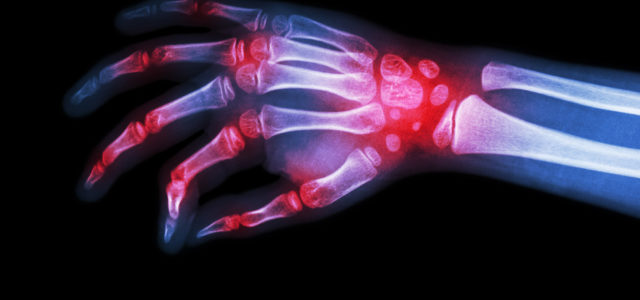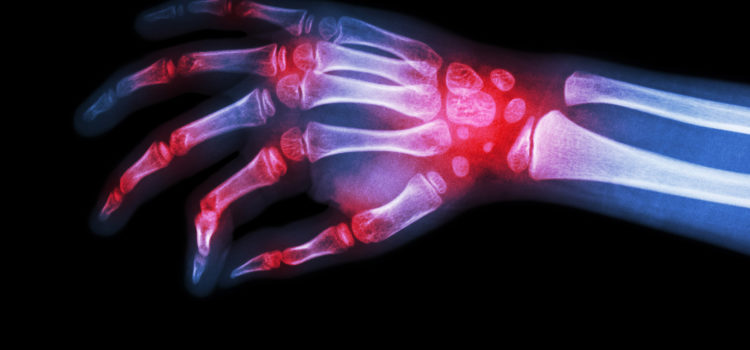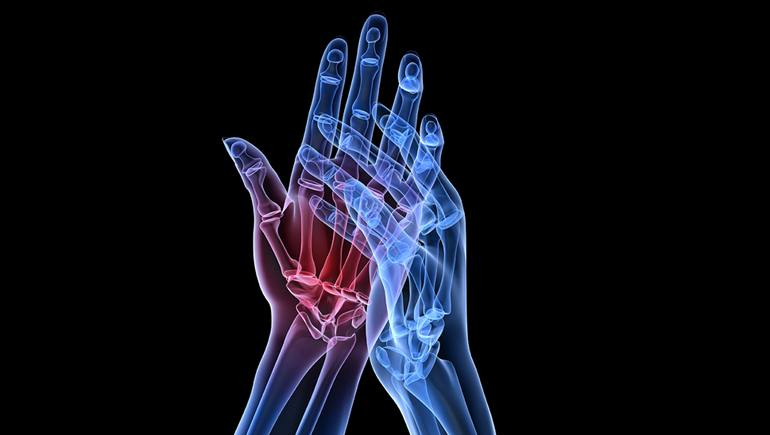


Many folks begin to experience pain from Rheumatoid Arthritis as they reach middle age and older. If can be very painful and limit movement in your fingers and put a big damper on your life if not addressed. Here are some causes and tips to dealing with RA.

The Causes and Symptoms
Rheumatoid arthritis is a chronic inflammatory disorder that can affect more than just your joints. In some people, the condition also can damage a wide variety of body systems, including the skin, eyes, lungs, heart and blood vessels. An autoimmune disorder, rheumatoid arthritis occurs when your immune system mistakenly attacks your own body’s tissues. Unlike the wear-and-tear damage of osteoarthritis, rheumatoid arthritis affects the lining of your joints, causing a painful swelling that can eventually result in bone erosion and joint deformity. The inflammation associated with rheumatoid arthritis is what can damage other parts of the body as well. While new types of medications have improved treatment options dramatically, severe rheumatoid arthritis can still cause physical disabilities.

Signs and symptoms of rheumatoid arthritis may include: Tender, warm, swollen joints. Joint stiffness that is usually worse in the mornings and after inactivity. Fatigue, fever and weight loss. Early rheumatoid arthritis tends to affect your smaller joints first — particularly the joints that attach your fingers to your hands and your toes to your feet. As the disease progresses, symptoms often spread to the wrists, knees, ankles, elbows, hips and shoulders. In most cases, symptoms occur in the same joints on both sides of your body. About 40 percent of the people who have rheumatoid arthritis also experience signs and symptoms that don’t involve the joints. Rheumatoid arthritis can affect many non-joint structures, including: Skin, Eyes, Lungs, Heart, Kidneys, Salivary glands, Nerve tissue, Bone marrow, Blood vessels. Rheumatoid arthritis signs and symptoms may vary in severity and may even come and go. Periods of increased disease activity, called flares, alternate with periods of relative remission.

What can be done about it?
Here are some of the remedies and treatments to Rheumatoid Arthritis. Inflammation Medication. In the case of RA, all other pain-relief strategies are secondary to controlling inflammation, The No. 1 option in the pain relief arsenal is to control inflammation with disease-modifying anti-rheumatic drugs, called DMARDS. These drugs, which work to suppress the body’s overactive immune system response, are also used to prevent joint damage and slow the progression of the disease. DMARDs are often prescribed shortly after a diagnosis in order to prevent as much joint damage as possible. Diet. Although some diets may be touted to help RA, they aren’t backed by the medical community. There is no evidence that any special diet will reduce RA pain. But there is some evidence that omega-3 fatty acids can help reduce inflammation — and the joint pain that results from it. Omega-3s can be found in cold-water fish and in fish oil supplements. A study found that people who took fish oil supplements were able to reduce the amount of pain medication they needed. Other things, such as exercise, Acupuncture, hot and cold treatments are other ways to combat RA.
If you are experiences the early signs of RA, please contact your primary care physician to obtain more information regarding the matter. Don’t ignore it because it will only get worse.











No comments so far.
Be first to leave comment below.